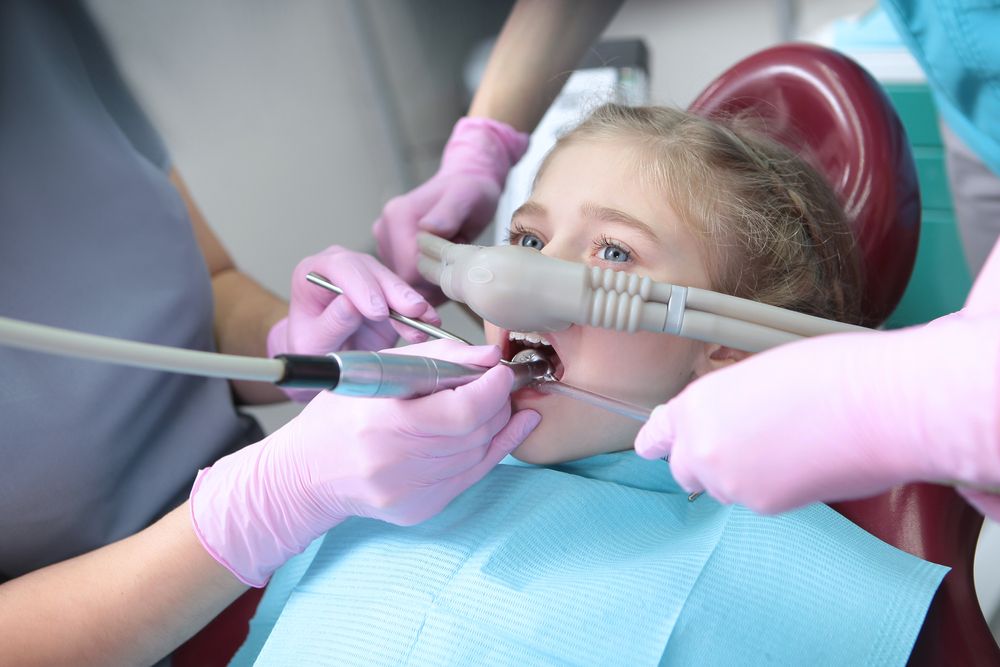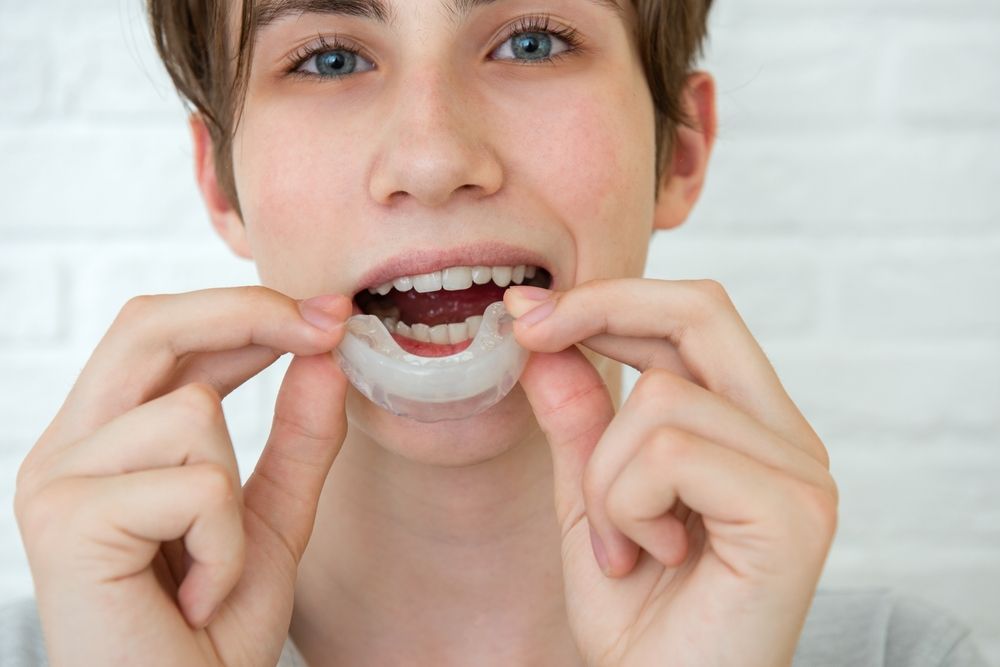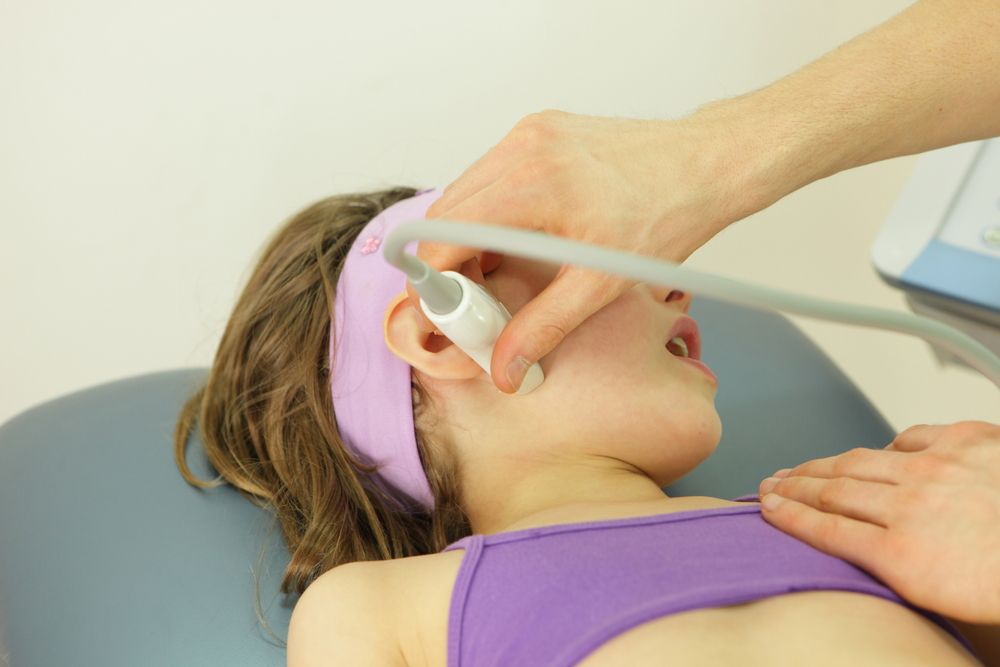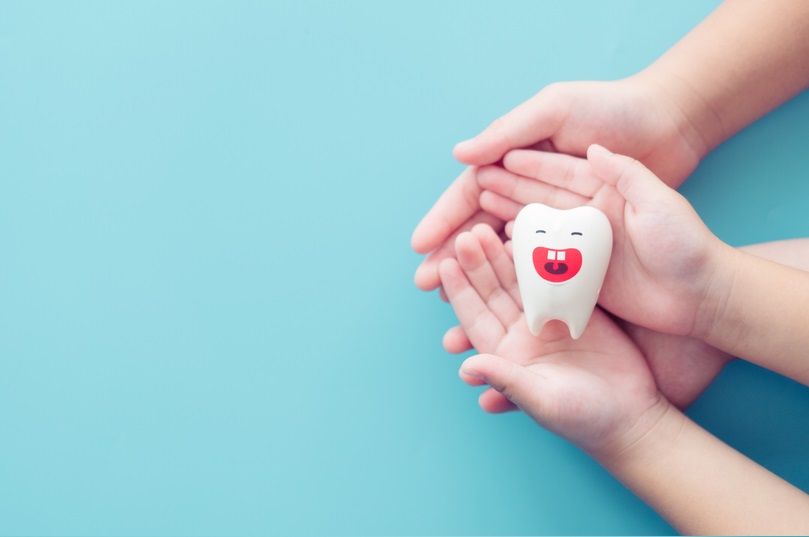When it comes to making dental visits more comfortable for children, many parents hear about nitrous oxide and sedation but may not fully understand how these options differ or when each is appropriate. At Dentistry for Children and Young Adults in San Jose, CA, educating families on these methods is important to help alleviate fears and make dental care less stressful for children. This blog will explore what nitrous oxide and sedation are, how they differ, and the benefits and considerations of each in pediatric dental care.
What Is Nitrous Oxide?
Nitrous oxide, commonly referred to as “laughing gas,” is a mild form of sedation frequently used in dentistry to help reduce anxiety and discomfort. It is a colorless, odorless gas mixed with oxygen and inhaled through a small mask placed over the nose. Nitrous oxide works quickly to create a feeling of relaxation and euphoria, helping children feel calm and less aware of the dental procedure.
One of the advantages of nitrous oxide is that it acts rapidly, both in onset and recovery. Typically, children feel the calming effects within minutes, and once the gas supply stops, they return to full alertness almost immediately. This makes it a safe and convenient option for mild to moderate anxiety or for children who are undergoing relatively simple or short dental treatments.
Nitrous oxide also has a good safety record when administered by trained professionals. It allows the child to remain conscious and able to respond to instructions, which is often beneficial in pediatric dentistry. Parents appreciate that children do not experience lingering grogginess and can resume normal activities shortly after treatment.
What Is Sedation?
Sedation in dentistry refers to the use of medication to help patients relax or sleep during dental procedures. Unlike nitrous oxide, sedation can range from minimal, where the child is relaxed but awake, to moderate or deep sedation, where the child may be drowsy or fully asleep. Sedation can be administered in several forms, including oral medications, intravenous (IV) drugs, or inhaled gases other than nitrous oxide.
The purpose of sedation is to reduce anxiety, control pain, and sometimes induce amnesia so that children do not remember the dental experience. This approach is typically considered when dental procedures are more complex, lengthy, or when a child has severe dental fear or special health care needs that make traditional dental treatment challenging.
Because sedation affects the central nervous system more deeply than nitrous oxide, it requires careful monitoring by the dental team. Recovery times can vary depending on the type and amount of sedative used, and children may need to be accompanied by a caregiver after the appointment for safety reasons.
Key Differences Between Nitrous Oxide and Sedation
Understanding the differences between nitrous oxide and sedation can help parents make informed decisions regarding their child’s dental care. Here are some important distinctions:
- Level of Consciousness: Nitrous oxide allows the child to remain fully awake and responsive, whereas sedation can range from relaxed wakefulness to full sleep.
- Administration: Nitrous oxide is inhaled through a mask and can be quickly adjusted or stopped during the procedure. Sedation may involve oral pills, IV medication, or deeper forms requiring specialized equipment and monitoring.
- Onset and Recovery: Nitrous oxide works within minutes and wears off quickly after the gas is stopped, allowing children to leave the office alert. Sedation has a slower onset and longer recovery period, often requiring post-treatment supervision.
- Safety and Monitoring: Both methods are safe when administered by trained professionals, but sedation generally requires more intensive monitoring due to its effects on breathing and heart rate.
- Purpose: Nitrous oxide is ideal for mild to moderate anxiety and short procedures, while sedation is preferred for more extensive dental work or children with high anxiety or special needs.
When Are Nitrous Oxide and Sedation Used?
The choice between nitrous oxide and sedation depends on various factors including the child’s age, level of dental anxiety, medical history, and the complexity of the dental procedure. Nitrous oxide is often used for routine cleanings, cavity fillings, or minor restorative work in children who are somewhat nervous but cooperative.
Sedation may be recommended for more invasive treatments like extractions, multiple fillings, or procedures requiring the child to remain still for extended periods. Children with developmental disabilities, behavioral challenges, or a history of traumatic dental experiences may also benefit from sedation to ensure safe and effective care.
In some cases, nitrous oxide is used alongside other sedation methods to optimize comfort and safety. Dental professionals assess each child individually to determine the most appropriate approach, always prioritizing safety and positive experiences.
Benefits and Considerations for Parents
Both nitrous oxide and sedation offer significant benefits in pediatric dentistry, but it’s important for parents to understand what to expect. Nitrous oxide is valued for its rapid action, minimal side effects, and ability to keep children calm without loss of consciousness. It allows for a quick recovery, so children can usually return to school or activities the same day.
Sedation provides a deeper level of anxiety control and pain management, making complex dental care feasible for children who might otherwise avoid treatment. However, because of its stronger effects, sedation requires pre-appointment guidelines such as fasting, and parents must plan for post-procedure supervision.
Open communication with the dental provider about your child’s health history, fears, and past dental experiences will help determine the best option. Understanding the differences between nitrous oxide and sedation enables parents to feel confident in supporting their child’s dental care and ensuring the best possible experience.
At Dentistry for Children and Young Adults in San Jose, CA, we believe that educating families about dental comfort options is key to fostering positive attitudes toward oral health. Knowing the difference between nitrous oxide and sedation can empower parents to make informed decisions and help their children receive compassionate, effective care.
Resources
- American Academy of Pediatric Dentistry. (2022). Guideline on Use of Nitrous Oxide for Pediatric Patients. Pediatric Dentistry Journal.
- American Dental Association. (2021). Sedation and General Anesthesia in Dentistry. Journal of the American Dental Association.
- Wilson, S. F., & Moore, P. A. (2017). Pediatric Sedation in Dentistry. Quintessence Publishing.




